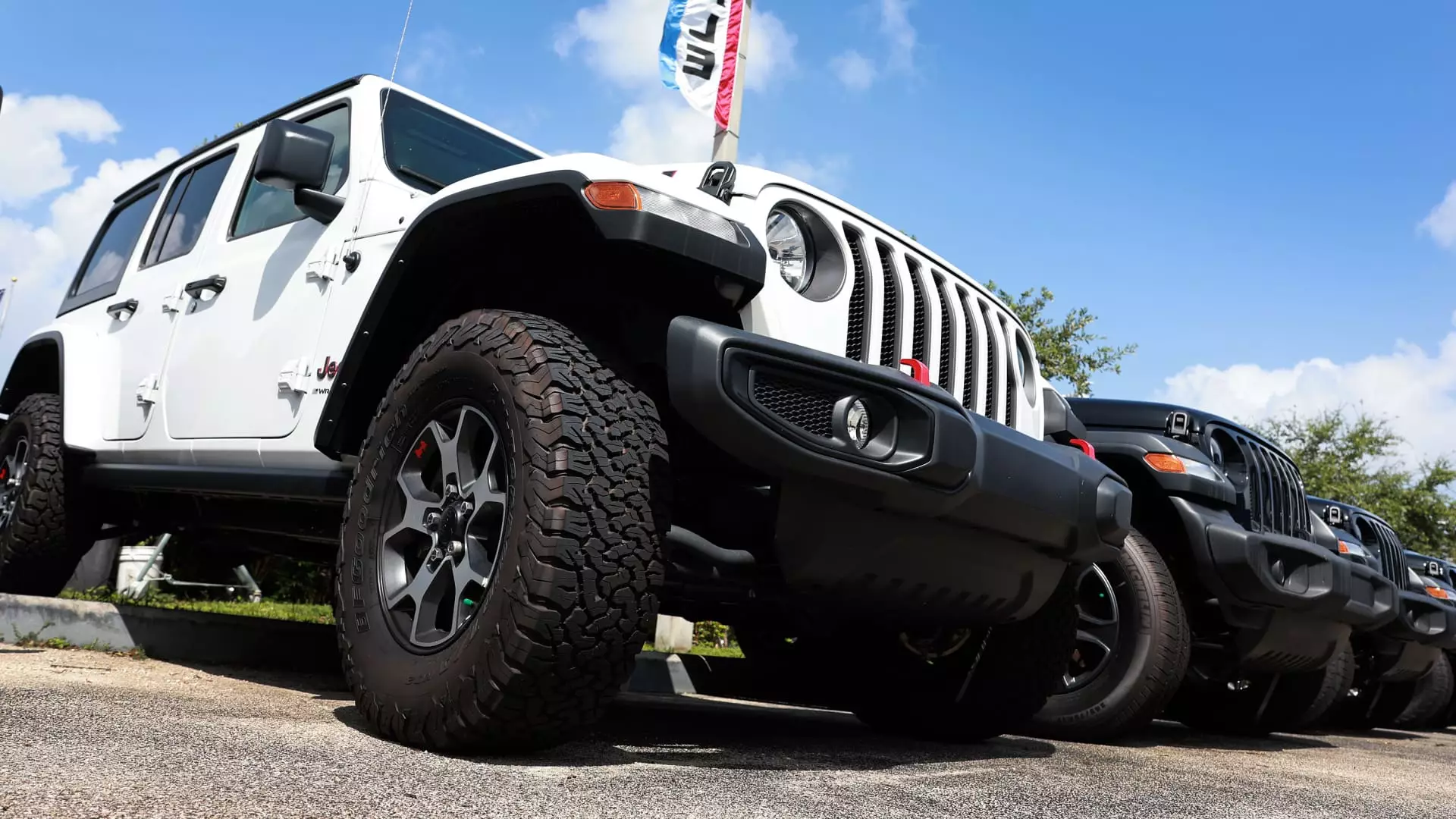The U.S. auto industry is grappling with a challenging environment as it approaches the end of the third quarter of 2023. According to industry analysts, new vehicle sales are projected to decline by approximately 2% compared to the previous year, hitting around 3.9 million units sold. This downturn is exacerbated by ongoing economic uncertainties, elevated interest rates, and persistent inflation, all of which contribute to a tough market landscape. Compared to the second quarter of this year, sales are likely to dip around 5%, reflecting a broader trend of contraction in the auto sector.
The current situation vividly illustrates the complexities of consumer behavior in the face of rising costs and restrictive financial conditions. Charlie Chesbrough, a senior economist at Cox Automotive, notes that while the recent Federal Reserve rate cuts might help ease some pressures, they do not promise a robust recovery in auto sales for the remainder of the year. “Affordability remains the main obstacle to a stronger market,” Chesbrough states, hinting at the tight squeeze many potential buyers feel as they navigate financial juggling acts to consider new vehicle purchases.
Consumer purchasing power has been significantly strained, primarily due to the average transaction price for new vehicles standing at around $47,870. Although this figure marks a decrease from previous years, it is still high compared to historical norms. Jessica Caldwell, head of insights at Edmunds, underlined the widening affordability gap, asserting that the steep average financing cost of $40,000 for a new vehicle poses a barrier for many potential buyers. The stark reality is that the current pricing structure limits access to new vehicles for a substantial portion of the American populace, leading to significant market challenges.
As major automakers strive to address these obstacles, the forecast for 2024 indicates slight improvement with overall vehicle sales expected to total approximately 15.7 million units. This projection comes at a time when automakers must navigate a fine line between maintaining competitive pricing and ensuring profitability. Notably, forecasts from Cox Automotive have been adjusted downward from an earlier estimate of 16 million.
Within this turbulent market, some automakers are managing to find paths to growth. According to forecasts, companies like Honda and Ford are likely to see their sales increase in the third quarter, a stark contrast to competitors such as Stellantis, Toyota, and BMW, where significant downturns in sales are anticipated. Stellantis, in particular, is facing severe challenges, with projections indicating a staggering 21% decline in their sales for the third quarter. CEO Carlos Tavares has made the controversial decision to prioritize profit margins over market share, especially affecting the sales performance of key brands like Jeep and Ram.
This raises important questions about the long-term viability of such strategies. While short-term profitability may be prioritized, alienating consumers in the process could spell trouble for brand loyalty, especially as the market recovers.
The landscape for electric vehicles (EVs) presents both promising trends and sobering realities. While EV sales are anticipated to grow by about 8% year-over-year, this growth comes with caveats rooted in the overall performance of the market. Notably, Tesla, the industry leader, is projected to experience a slight decline of 2.4% in sales during this same period, which signals potential challenges ahead as competition intensifies. Tesla’s market share is expected to dip below 50% for the second consecutive quarter, highlighting the fierce rise of new entrants looking to claim pieces of the EV pie.
Incentives have become a significant factor in the projection of EV sales, with government credits augmenting the appeal of these vehicles. The federal incentive of up to $7,500 per vehicle has contributed to average transaction prices for EVs remaining stable year-over-year, despite slight fluctuations in other aspects of the automobile market. As a result, incentives are making EVs an increasingly attractive option compared to traditional combustion-engine vehicles.
As the auto industry trudges through a tumultuous 2023, the key themes that arise from this quarter’s analysis are those of affordability, strategic growth, and the evolving landscape of electric vehicles. Consumers are navigating an affordability crisis, auto manufacturers are wrestling with balancing profitability and volume, and the electric vehicle revolution carries both opportunities and challenges. With 2024 on the horizon, stakeholders across the industry will need to remain agile and responsive to consumer demands, economic shifts, and regulatory changes to thrive in this evolving marketplace.


Leave a Reply